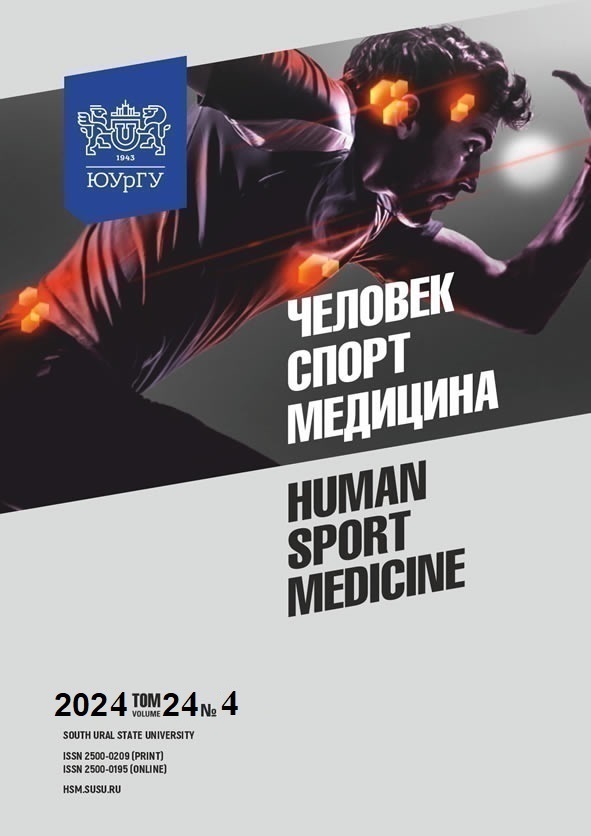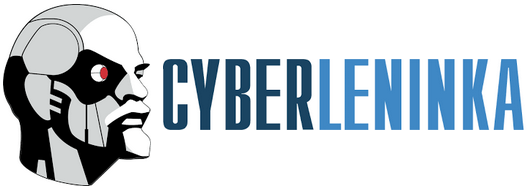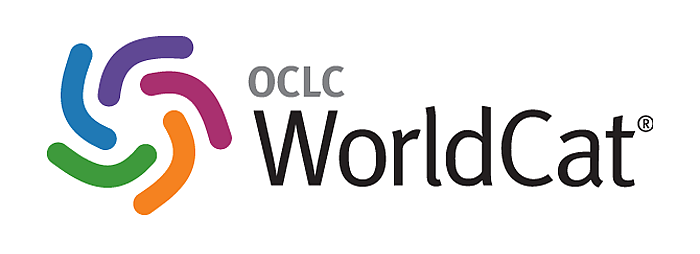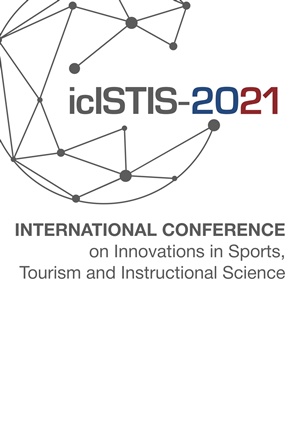ОСОБЕННОСТИ ВОЗВРАЩЕНИЯ В СОРЕВНОВАТЕЛЬНЫЙ СПОРТ ПОСЛЕ САМОИЗОЛЯЦИИ, ВЫЗВАННОЙ ПАНДЕМИЕЙ COVID-19
Аннотация
Цель: установить влияние режима самоизоляции и перенесенной коронавирусной инфекции (COVID-19) на показатели состава тела спортсменов, представляющих различные виды спорта. Материалы и методы. Всего было обследовано 2540 профессиональных спортсменов в 28 видах спорта. Клиническое обследование включало опрос, осмотр, биоимпеданс. Лабораторный анализ крови проводился методом полимеразной цепной реакции (ПЦР) на генетический материал вируса и уровень антител IgM и IgG к вирусу SARS-CoV-2. Результаты. Общее количество людей, инфицированных SARS-CoV-2, составило 325 (13 %), из них 12 человек с ПЦР+, 38 – с IgM+ и 275 – с IgG+. Ни один из спортсменов не был госпитализирован и не имел симптомов пневмонии или кардиологических проблем. Период самоизоляции с ограничением самоподготовки длился от 2,5 до 3 месяцев, после чего у большинства спортсменов выявлено перераспределение мышечной ткани в жировую. При этом наиболее значимые изменения были выявлены среди спортсменов, тренирующих преимущественно сложнотехнические и сложнокоординационные навыки и такие качества, как выносливость. Убедительных данных о влиянии перенесенного COVID-19 на увеличение массы тела и процента жировой массы не получено. Наибольшее количество спортсменов, переболевших COVID-19, было среди спортсменов, тренирующих силу: борцов, дзюдоистов, самбистов. Заключение. Спортсмены подвержены высокому риску заражения коронавирусной инфекцией, особенно в контактных видах спорта, таких как борьба, самбо, дзюдо и др. и командных видах спорта, они нуждаются в обязательном тестировании на инфекцию перед допуском к тренировкам и соревнованиям. Необходимо поддерживать физическую форму в условиях самоизоляции и тренерскому составу обратить внимание на подготовку рекомендаций при составлении плана индивидуальных тренировок, сопоставимых с требованиями, предъявляемыми к конкретному виду спорта.
Литература
2. Bisciotti G.N., Eirale C., Corsini A. et al. Return to Football Training and Competition After Lockdown Caused by the COVID-19 Pandemic: Medical Recommendations. Biology Sport, 2020, vol. 37 (3), pp. 313–319. DOI: 10.5114/biolsport.2020.96652
3. Bok D., Chamari K., Foster C. Pitch Invader – COVID-19 Canceled the Game: What Can Science Do for Us, and What Can the Pandemic Do for Science? International Journal of Sports Physiology and Performance, 2020, vol. 15, pp. 917–919. DOI: 10.1123/ijspp.2020-0467
4. Braun T., Kahanov L. Community-associated Methicillin-resistant Staphylococcus Aureus Infection Rates and Management Among Student-athletes. Medicine Science Sports Exercise, 2018, vol. 50 (9), pp. 1802–1809. DOI: 10.1249/MSS.0000000000001649
5. Budts W., Pieles G.E., Roos-Hesselink J.W. et al. Recommendations for Participation in Competitive Sport in Adolescent and Adult Athletes with Congenital Heart Disease (CHD): Position Statement of the Sports Cardiology & Exercise Section of the European Association of Preventive Cardiology (EAPC), the European Society of Cardiology (ESC) Working Group on Adult Congenital Heart Disease and the Sports Cardiology, Physical Activity and Prevention Working Group of the Association for European Paediatric and Congenital Cardiology (AEPC). European Heart Journal, 2020, 501. DOI: 10.1093/eurheartj/ehaa501
6. Caselli S., Di Paolo F.M., Pisicchio C. et al. Patterns of Left Ventricular Diastolic Function in Olympic Athletes. Journal American Society Echocardiogram, 2015, vol. 28 (2), pp. 236–244. DOI: 10.1016/j.echo.2014.09.013
7. Coronavirus Statistics for Russia. Available at: http://www.coronavirusstat.ru/country/moskva (accessed 30.08.2020).
8. Kyle U.G., Bosaeus I., De Lorenzo A.D. et al. ESPEN. Bioelectrical Impedance Analysis-part II: Utilization in Clinical Practice. Clinical Nutr., 2004, vol. 23 (6), pp. 1430–1453. DOI: 10.1016/j.clnu.2004.09.012
9. Lim M.A., Pranata R. Sports Activities During Any Pandemic Lockdown. Ir. Journal Medical Science, 2020, vol. 1–5, DOI: 10.1007/s11845-020-02300-9
10. Matthie J., Zarowitz B., de Lorenzo A., Andreoli A. Analitic Assessment of the Various Bioimpedance Methods Used to Estimate Body Water. The American Physiological Society, 1998, pp. 1801–1816. DOI: 10.1152/jappl.1998.84.5.1801
11. Mujika I., Padilla S. Detraining: Loss of Training-induced Physiological and Performance Adaptations. Part I: Short Term Insufficient Training Stimulus. Sports Medicine, 2000, vol. 30 (2), pp. 79–87. DOI: 10.2165/00007256-200030020-00002
12. Nes B.M., Janszky I., Wisløff U. et al. Age-predicted Maximal Heart Rate in Healthy Subjects: The HUNT Fitness Study. Scandinavian Journal Medicine Science Sports, 2013, vol. 23 (6), pp. 697–704. DOI: 10.1111/j.1600-0838.2012.01445.x
13. Neufer P.D. The Effect of Detraining and Reduced Training on the Physiological Adaptations to Aerobic Exercise Training. Sports Medicine, 1989, vol. 8 (5), pp. 302–320. DOI: 10.2165/00007256-198908050-00004
14. Pelliccia A., Caselli S., Sharma S. et al. Internal Reviewers for EAPC and EACVI. European Association of Preventive Cardiology (EAPC) and European Association of Cardiovascular Imaging (EACVI) Joint Position Statement: Recommendations for the Indication and Interpretation of Cardiovascular Imaging in the Evaluation of the Athlete’s Heart. European Heart Journal, 2018, vol. 39 (21), pp. 1949–1969. DOI: 10.1093/eurheartj/ehx53
15. Peterson A.R., Nash E., Anderson B.J. Infectious Disease in Contact Sports. Sports Healthcare, 2019, vol. 11 (1), pp. 47–58. DOI: 10.1177/1941738118789954
16. Toresdahl B.G., Asif I.M. Coronavirus Disease 2019 (COVID-19): Considerations for the Competitive Athlete. Sports Healthcare, 2020, 1941738120918876. DOI: 10.1177/1941738120918876
17. Young L.M., Motz V.A., Markey E.R. et al. Recommendations for Best Disinfectant Practices to Reduce the Spread of Infection via Wrestling Mats. Journal Athl. Training, 2017, vol. 52, pp. 82–88. DOI: 10.4085/1062-6050-52.1.02
References
1. Bird S., Calleja-González J., Alcaraz P.E. Season Suspension and Summer Extension: Unique Opportunity for Professional Team-Sport Athletes and Support Staff During and Following the COVID-19. Front. Sports Activity Living, vol. 2, p. 98. DOI: 10.3389/fspor.2020.000982. Bisciotti G.N., Eirale C., Corsini A. et al. Return to Football Training and Competition After Lockdown Caused by the COVID-19 Pandemic: Medical Recommendations. Biology Sport, 2020, vol. 37 (3), pp. 313–319. DOI: 10.5114/biolsport.2020.96652
3. Bok D., Chamari K., Foster C. Pitch Invader – COVID-19 Canceled the Game: What Can Science Do for Us, and What Can the Pandemic Do for Science? International Journal of Sports Physiology and Performance, 2020, vol. 15, pp. 917–919. DOI: 10.1123/ijspp.2020-0467
4. Braun T., Kahanov L. Community-associated Methicillin-resistant Staphylococcus Aureus Infection Rates and Management Among Student-athletes. Medicine Science Sports Exercise, 2018, vol. 50 (9), pp. 1802–1809. DOI: 10.1249/MSS.0000000000001649
5. Budts W., Pieles G.E., Roos-Hesselink J.W. et al. Recommendations for Participation in Competitive Sport in Adolescent and Adult Athletes with Congenital Heart Disease (CHD): Position Statement of the Sports Cardiology & Exercise Section of the European Association of Preventive Cardiology (EAPC), the European Society of Cardiology (ESC) Working Group on Adult Congenital Heart Disease and the Sports Cardiology, Physical Activity and Prevention Working Group of the Association for European Paediatric and Congenital Cardiology (AEPC). European Heart Journal, 2020, 501. DOI: 10.1093/eurheartj/ehaa501
6. Caselli S., Di Paolo F.M., Pisicchio C. et al. Patterns of Left Ventricular Diastolic Function in Olympic Athletes. Journal American Society Echocardiogram, 2015, vol. 28 (2), pp. 236–244. DOI: 10.1016/j.echo.2014.09.013
7. Coronavirus Statistics for Russia. Available at: http://www.coronavirusstat.ru/country/moskva (accessed 30.08.2020).
8. Kyle U.G., Bosaeus I., De Lorenzo A.D. et al. ESPEN. Bioelectrical Impedance Analysis-part II: Utilization in Clinical Practice. Clinical Nutr., 2004, vol. 23 (6), pp. 1430–1453. DOI: 10.1016/j.clnu.2004.09.012
9. Lim M.A., Pranata R. Sports Activities During Any Pandemic Lockdown. Ir. Journal Medical Science, 2020, vol. 1–5, DOI: 10.1007/s11845-020-02300-9
10. Matthie J., Zarowitz B., de Lorenzo A., Andreoli A. Analitic Assessment of the Various Bioimpedance Methods Used to Estimate Body Water. The American Physiological Society, 1998, pp. 1801–1816. DOI: 10.1152/jappl.1998.84.5.1801
11. Mujika I., Padilla S. Detraining: Loss of Training-induced Physiological and Performance Adaptations. Part I: Short Term Insufficient Training Stimulus. Sports Medicine, 2000, vol. 30 (2), pp. 79–87. DOI: 10.2165/00007256-200030020-00002
12. Nes B.M., Janszky I., Wisløff U. et al. Age-predicted Maximal Heart Rate in Healthy Subjects: The HUNT Fitness Study. Scandinavian Journal Medicine Science Sports, 2013, vol. 23 (6), pp. 697–704. DOI: 10.1111/j.1600-0838.2012.01445.x
13. Neufer P.D. The Effect of Detraining and Reduced Training on the Physiological Adaptations to Aerobic Exercise Training. Sports Medicine, 1989, vol. 8 (5), pp. 302–320. DOI: 10.2165/00007256-198908050-00004
14. Pelliccia A., Caselli S., Sharma S. et al. Internal Reviewers for EAPC and EACVI. European Association of Preventive Cardiology (EAPC) and European Association of Cardiovascular Imaging (EACVI) Joint Position Statement: Recommendations for the Indication and Interpretation of Cardiovascular Imaging in the Evaluation of the Athlete’s Heart. European Heart Journal, 2018, vol. 39 (21), pp. 1949–1969. DOI: 10.1093/eurheartj/ehx53
15. Peterson A.R., Nash E., Anderson B.J. Infectious Disease in Contact Sports. Sports Healthcare, 2019, vol. 11 (1), pp. 47–58. DOI: 10.1177/1941738118789954
16. Toresdahl B.G., Asif I.M. Coronavirus Disease 2019 (COVID-19): Considerations for the Competitive Athlete. Sports Healthcare, 2020, 1941738120918876. DOI: 10.1177/1941738120918876
17. Young L.M., Motz V.A., Markey E.R. et al. Recommendations for Best Disinfectant Practices to Reduce the Spread of Infection via Wrestling Mats. Journal Athl. Training, 2017, vol. 52, pp. 82–88. DOI: 10.4085/1062-6050-52.1.02
Copyright (c) 2025 Человек. Спорт. Медицина

Это произведение доступно по лицензии Creative Commons «Attribution-NonCommercial-NoDerivatives» («Атрибуция — Некоммерческое использование — Без производных произведений») 4.0 Всемирная.















